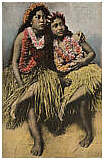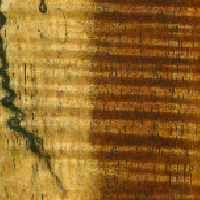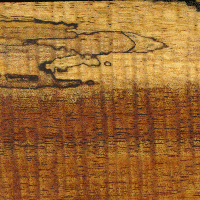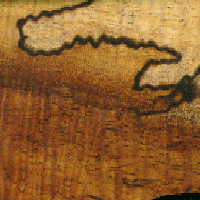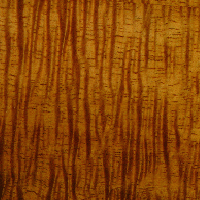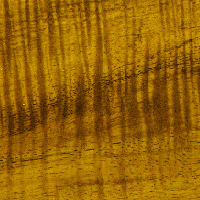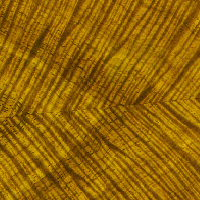About Koa Wood…
A Woodworkers description and a sampling of images
A few years ago, my friend and fellow woodworker Hank Snider wrote the following regarding Hawaiian koa wood:
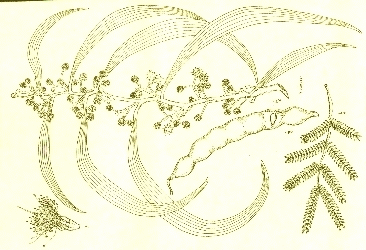 “With the possible exception of sandalwood, koa is the best-known hardwood of the Hawaiian Islands. Acacia koa is a native forest tree, unique to Hawaii, and held in reverence. Koa means bold, a quality essential to the ocean-going vessels which were adze-carved from giant logs in Big Island forests. Koa was used by early European craftsmen in Hawaii to make western-style furniture of the last century, some of which survives as Hawaiian heritage antiques. Modern uses include some extensive employment in isolated commercial and government buildings, some production furniture made locally in small factories, and the limited output of a few score of individual craftsmen who make one or a few pieces at a time.
“With the possible exception of sandalwood, koa is the best-known hardwood of the Hawaiian Islands. Acacia koa is a native forest tree, unique to Hawaii, and held in reverence. Koa means bold, a quality essential to the ocean-going vessels which were adze-carved from giant logs in Big Island forests. Koa was used by early European craftsmen in Hawaii to make western-style furniture of the last century, some of which survives as Hawaiian heritage antiques. Modern uses include some extensive employment in isolated commercial and government buildings, some production furniture made locally in small factories, and the limited output of a few score of individual craftsmen who make one or a few pieces at a time.
Availability of this treasured wood has been declining largely because of lack of reforestation with koa following logging. The usual practice has been to replace koa with cattle, which prevent regeneration of the forest. This practice reduces the tax burden on the land, under current tax laws. The reduction of the supply of koa has resulted in a dramatic rise in the price, which is about five times higher than in 1980. In the past few years some replanting has started, which will perhaps lead to a sustained supply of wood in a few decades.
The present conditions of restricted supply have led to some interesting results affecting the quality of available wood. Presently, koa is coming from a variety of small suppliers who take trees from different parts of the geographic range of koa. Thus the available koa is highly variable in appearance, depending on where it came from. Koa is remarkably multi-colored, with a variety of hues appearing next to each other in the same piece of wood, ranging from yellow or greenish-yellow, through orange, brown, and red, to almost black. The dominant color among the others differs in woods from different sources. The result is that one has a choice of finished pieces which range in color and appearance much more than a generation ago, when the dark red wood from a single mill on the Big Island dominated the market. Many prefer the lighter golden hues which retain their brilliance when shown in interior spaces with subdued lighting.
The other remarkable quality of koa results from its curly grain. Most koa has a three-dimensional quality which draws the eye beneath the surface of the wood, making its surface seem almost transparent. In the choicest pieces these swirls and waves in the wood are truly spectacular. Despite its also spectacular price this curly wood is in great demand, and is carefully husbanded by fine craftsmen to create jewels of the forest which will be treasured for generations.
During the past few years a source of koa wood for Oahu craftsmen has been trees in local forests which have been dying or toppling in windstorms. Some of these old mature trees have proved to contain wood of exquisite color and character, and every available scrap of the wood has been used to make items as small as pens and hair ornaments. This is a welcome source of wood for the environmentally aware, concerned and active people who would otherwise embargo the use of koa and other trees from the native forests of the Hawaiian Islands. These islands are the most isolated in the world, and have remained so for tens of millions of years. During this extended period a truly spectacular biota of unique plants and animals evolved here. From his initial arrival a thousand years or so ago, the activities of man have reduced the range of many species and resulted in the extinction of some. This process has accelerated with recent population increases and economic expansion. The use of windfallen trees, veneers, alternative hardwoods as well as conscientious wood-sparing designs are among the responses of wood workers to these concerns. Public policy decisions about tax strategies, reforestation, restriction of introduced plants and animals, and economic development will be crucial in preserving Hawaii’s remaining unique biological heritage.”
Hank Snider, 1994
For further information see: http://www.winrock.org/fnrm/factnet/factpub/factsh/AKOA.TXT
For those of you who haven’t had the chance to see koa wood, I offer the following from a random selection of pieces that I deal with. In the first group, the samples have been lightly treated with Deft Danish oil (the SCNKOA#.GIF series); the second group of images is taken from the backs of some of my current instruments in stock (SCNUKE#) wherein the wood has been sealed and lacquered. The size chosen (200×200 pixels) may make it useful for your Windows wallpaper. If these images are used in a commercial site, I would appreciate either a link or a simple source acknowledgement.
First we look at relatively simple patterns
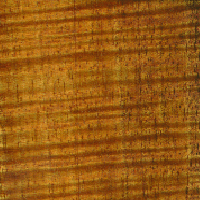
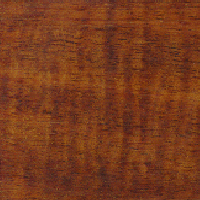
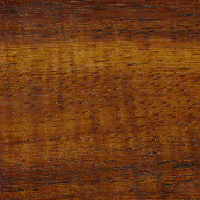
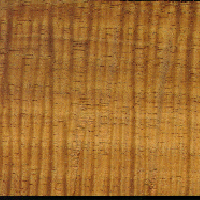
Sometimes I deal with koa wood that is a mixture of both sapwood, which is usually more lightly colored, and heartwood. If the wood has been allowed to languish in the elements before harvesting, various fungi enter the wood and discolor it in a variety of ways producing an effect termed “spalting”. Spalted wood is softer than unaltered wood, so our resin impregnation process becomes that much more important in making this beautiful effect still usable.
The last set of images are from the backs of current instruments. Symmetrical patterns are taken from the center seam area…
To explore more of the website, please refer to the Sitemap and Search Engine
